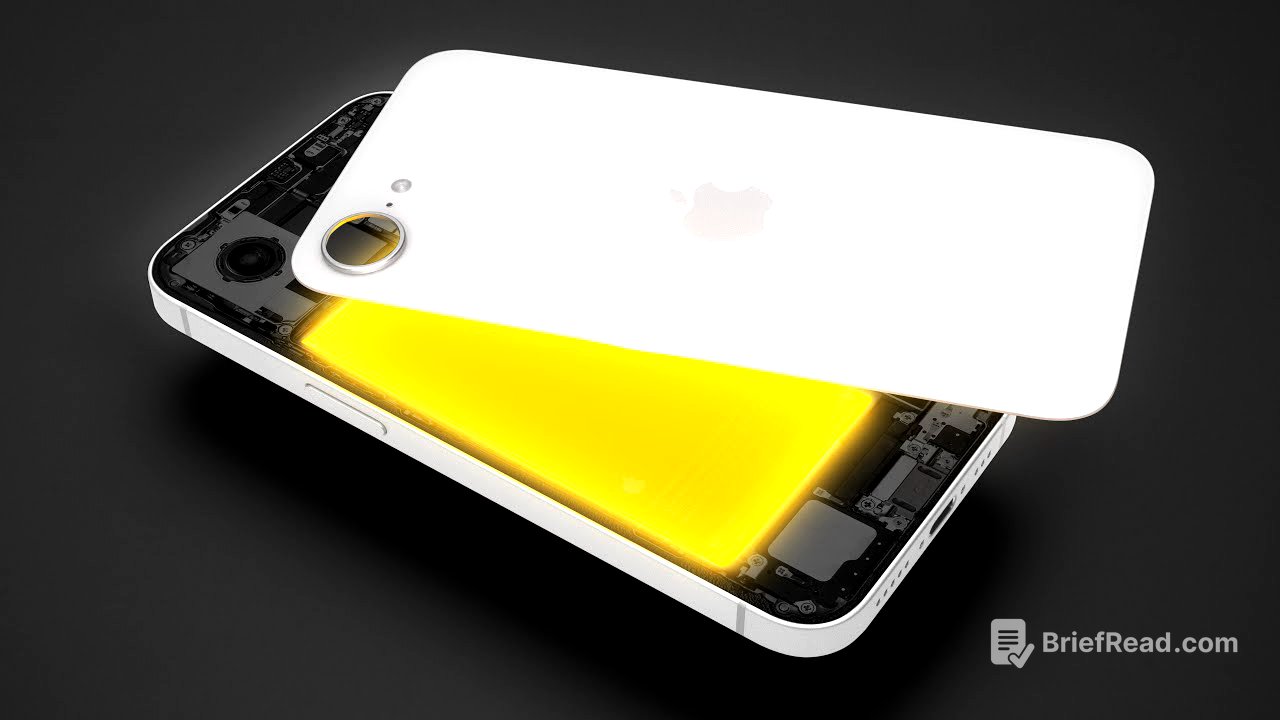TLDR;
This video reviews the new iPhone 16e, focusing on its surprising features and omissions for a semi-flagship device. The key takeaways are its exceptional battery life, achieved through a larger battery, the new C1 5G modem, and the efficient A18 chip. However, the phone lacks MagSafe, an ultra-wide lens, and other features, making it a questionable value proposition at its £600 price point.
- The iPhone 16e boasts outstanding battery life, comparable to larger "Plus" models.
- Key omissions include MagSafe, an ultra-wide lens, and sensor-shift image stabilisation.
- The phone features a 60Hz OLED display, an A18 chip (with one less GPU core), and Face ID.
Introduction: iPhone 16e Overview [0:01]
The iPhone 16e was unexpectedly launched as a semi-flagship product costing £600, a 40% increase over the expected budget replacement for the iPhone SE. Despite the initial surprise, the phone excels in battery life, outperforming other iPhones in its class. This long battery life is a significant advantage for an entry-level product in 2025, addressing a primary consumer need for extended usage rather than just faster performance.
Battery Life: Key Features and Components [0:56]
The exceptional battery life of the iPhone 16e is attributed to three main factors. Firstly, it features a nearly 4,000 mAh battery, larger than those in the iPhone 16 and 15, and significantly bigger than the one in the iPhone 14. Secondly, Apple's new C1 5G modem, developed over many years and costing billions, is highly energy-efficient. While direct modem comparisons are difficult, testing suggests longer-lasting streaming and gaming on cell data compared to the iPhone 16. The C1 modem does not support millimetre wave, but this is unlikely to be a major concern for an entry-level phone. Thirdly, the A18 chip, a binned-down version with one less GPU core, provides fantastic performance and energy efficiency for everyday use. The phone also includes 8GB of RAM, enabling Apple Intelligence features, although their current utility may not justify a purchase decision.
Compromises: Display, Camera, and MagSafe [3:54]
To position the iPhone 16e within their product lineup, Apple made strategic compromises. The phone features a 60Hz OLED panel, which, while an upgrade from previous SE models, is not as bright as the iPhone 15 and 16 panels and lacks a higher refresh rate. The single-lens camera system allows for 2x sensor zoom, but the absence of an ultra-wide lens is a significant drawback, impacting macro shots and general versatility. Video capabilities include 4K 60 recording, but lack sensor-shift image stabilisation. The removal of MagSafe is a particularly strange omission, limiting compatibility with magnetic chargers and accessories. While cases with built-in magnets can be used, Apple's official cases do not offer a MagSafe option, potentially to encourage upgrades to more expensive models.
Deficiencies and Noteworthy Features [7:46]
The iPhone 16e lacks several features found in higher-end models. These include the ultra-wide lens (and therefore macro), sensor-shift stabilisation, spatial vision capturing, and ultra-wideband. The front glass uses Ceramic Shield 1, the same as the iPhone 15, while the iPhone 16 has a supposedly 50% tougher glass. However, the phone does offer noteworthy features such as exceptional battery life, a powerful chip, an OLED panel, Face ID, and the action button.
Value and Conclusion [10:08]
Priced at £600 for the 128GB model, the iPhone 16e's focus on battery life is commendable for an entry-level phone. However, the removal of MagSafe and the ultra-wide lens at this price point diminishes its appeal. The cost of Apple Intelligence hardware and server costs being included in the price further impacts its value. While the price may decrease with the launch of the iPhone 17, those prioritising MagSafe and an ultra-wide lens may find the iPhone 15 a better value proposition.
